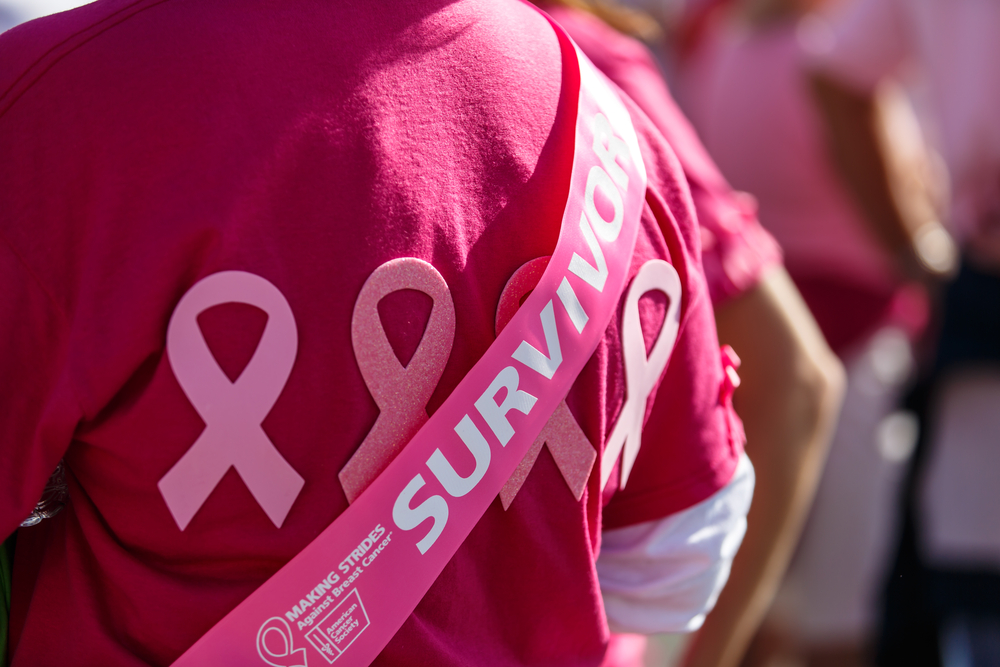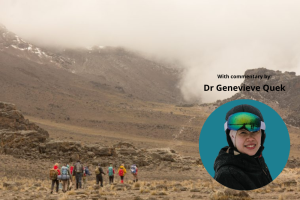Cancer is a critical health and human issue and is currently the second leading cause of death worldwide, only second to cardiovascular disease, accounting for nearly 10 million deaths in 2021, that’s 1 in 6 deaths.
World Cancer Day held every 4 February since 2000 is the global uniting initiative led by the Union for International Cancer Control (UICC). By raising worldwide awareness, improving education, and catalysing personal, collective and government action, we are all working together to reimagine a world where millions of preventable deaths are saved and access to life-saving treatment and care is equitable for all – no matter who you are or where you live.
What is cancer?
It is a disease of the body’s cells and can happen anywhere in any organ in our body. Under normal circumstances, our cells grow, divide, and differentiate in a controlled manner. When this delicate balance is disturbed, abnormal cells start to grow in an uncontrolled fashion and can form a mass, known as a tumour.
Tumours, on the other hand, can be benign or cancerous. The benign tumour is physically restrained in one organ and does not spread to nearby tissue. Once removed, it rarely grows back. The cancerous tumours can easily spread from one place to another through our lymphatic system and blood vessels, resulting in secondary tumours. Even after the removal, they frequently grow back.
Common types
Here are the ten most prevalent types of cancer worldwide, ranked by their prevalence from high to low:
- Breast
- Colorectal
- Prostate
- Tracheal, bronchus, and lung
- Non-melanoma skin
- Cervical
- Uterine
- Bladder
- Stomach
- Lip & oral
In Asia, the data collected in 2020 indicated that lung, breast, and colorectal cancer were the top three types of cancer. To read more on these types, click through the link for detailed information on our website.
Risk factors
First, all cancers have some underlying genetic risk factors or causes that may or may not have been discovered yet. For example, BRCA1 and BRCA2 genes are frequently associated with breast cancer; the APC gene is associated with colorectal cancer; the BCL-2 gene is associated with B cell lymphoma. The cancer gene can be inherited from parents to children or could be the result of random genetic mutation. However, different forms of cancer have their specific modifiable risk factors which we can avoid preventing the occurrence of the disease. Here, we listed some common risk factors for lung, breast, and colorectal cancer.
Lung cancer
- Tobacco smoke
- Second-hand smoke
- Air pollution
- Exposure to radon – a radioactive gas that results from the breakdown of uranium in soil and rocks
- Exposure to asbestos – used in some constructions and the textile industry
- Exposure to chemicals – such as arsenic, beryllium, silica and chromium compounds
Breast cancer
- Sedentary lifestyle
- Overweight
- Taking hormonal therapy
- First pregnancy after age 30
- Not breastfeeding
- Drinking alcohol
- Smoking
Colorectal cancer
- Sedentary lifestyle
- Overweight
- Dietary factors: a diet high in red meats (beef, lamb) and processed meats (sausages), low in fruit and vegetables.
- Drinking alcohol
- Smoking
As seen above, there are factors that contribute to multiple types of cancer, such as being overweight, lack of physical exercise, and alcohol/tobacco use. Avoid those overlapping risk factors as much as you could to minimise the chance of developing cancer.
Symptoms
Symptoms of the disease vary depending on the exact type, but here are some common signs you should look out for:
- Unexplained ache or pain
- Unexplained and unintentional weight loss
- Unexplained fever
- Lethargy
- Night sweat
- Change in mental state
- For lung cancer, look out for cough, hoarseness, and chest pain.
- For breast cancer, look out for lumps, discharge, and pain around the breast region.
- For colorectal cancer, look out for excessive diarrhoea, blood in stool, and abdominal pain.
Diagnosis and treatment
Naturally, many people fear the disease. But as modern medicine progresses, most types are now treatable, and many patients do live a healthy normal life after the diagnosis of the disease. Some of the common diagnostic tools are:
- Blood test: test for specific cancer markers and rule out other conditions.
- Imaging: X-ray, CT scan, bone scan, MRI etc.
- Biopsy: part of the tumour is removed and analysed under a microscope with special stains. It can also be used to identify the exact types and explore treatment options.
After diagnosis, the treating team will work to determine the stage of your cancer. Different cancers have different staging systems, and they are usually used to guide treatment options. Common treatment options are:
- Complete surgical removal
- Chemotherapy: use strong chemicals to kill cancer cells
- Radiotherapy: use radiation to kill cancer cells
- Immunotherapy: helps or activates our body’s own immunity to target cancer cells
- Hormonal therapy: change the body’s hormonal environment to target cancer cells that are affected by hormones
- Bone marrow transplant: usually used for blood cancer
In modern days, the treatments for the disease are patient-orientated and personalized based on patients’ expectations, treatment goals and prognoses. In many clinical scenarios, multiple treatments are utilized together to maximize the clinical benefit.
Conclusion
In 2023, the theme of World Cancer Day is ‘Close the Care Gap’. It’s all about celebrating progress in its many forms that enable more people to seek and receive the care they need and deserve. With the continuous advancement in prevention, diagnosis and treatment, a cancer-free world is no longer a dream. If you’d like to know more or get involved in World Cancer Day, click through the link here and act now.












